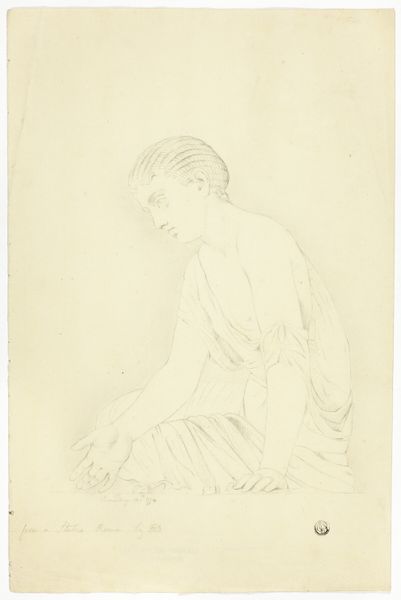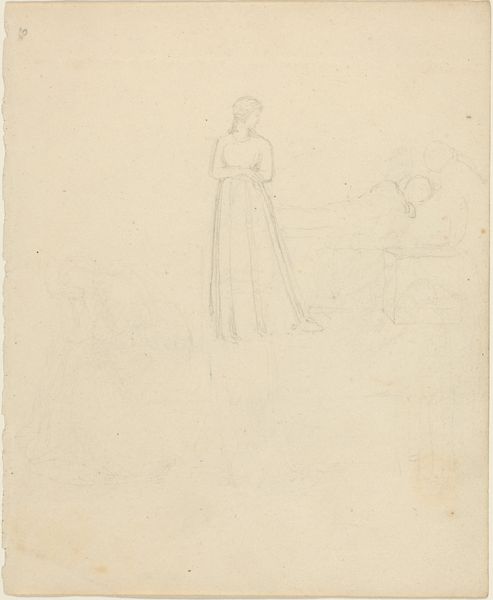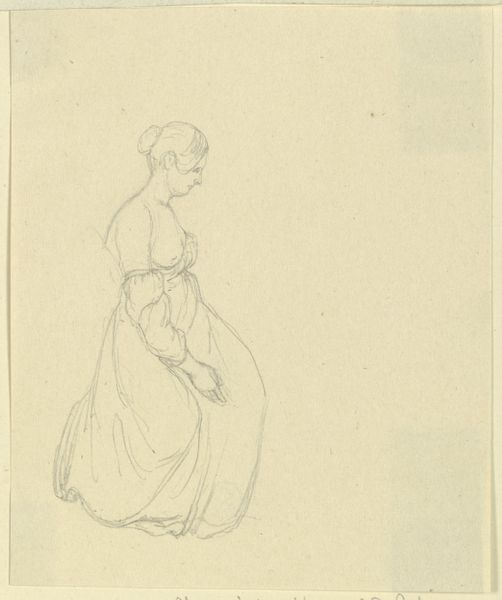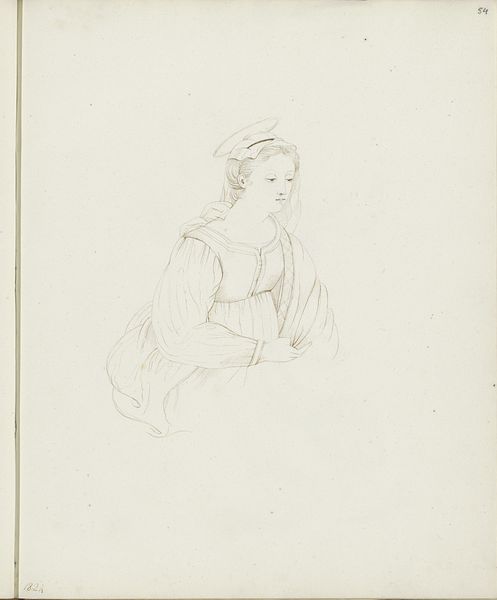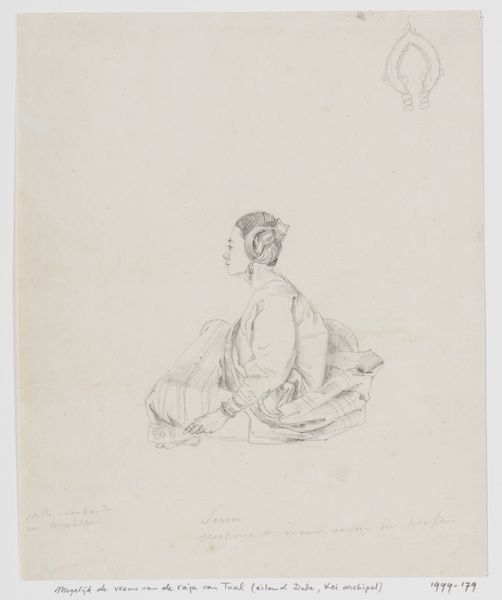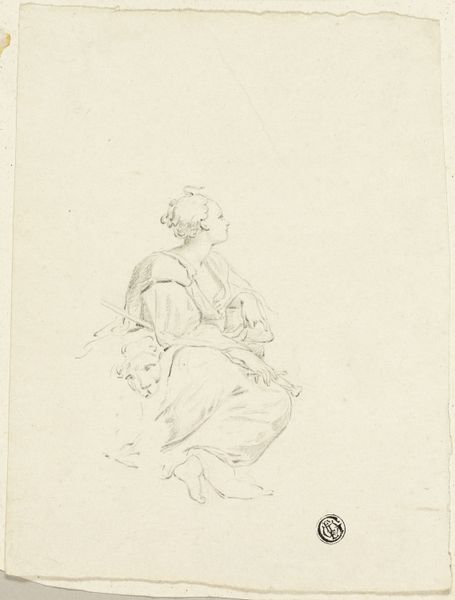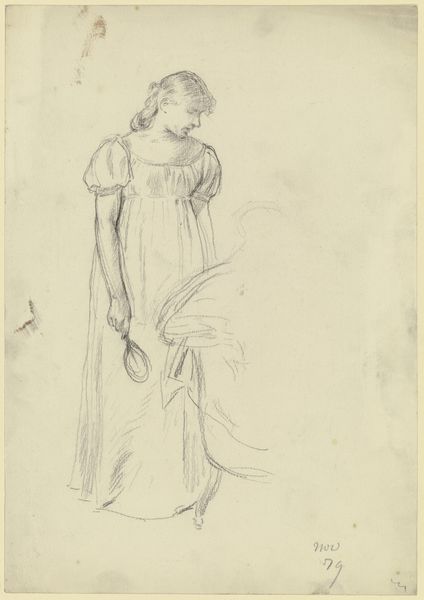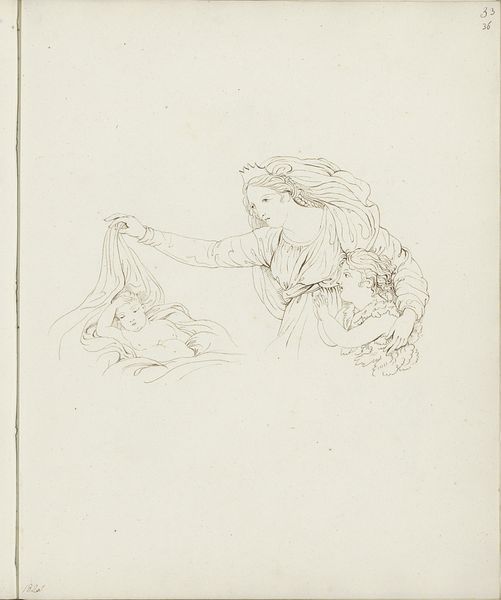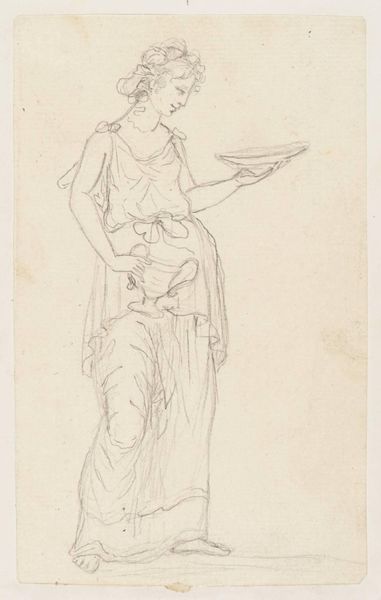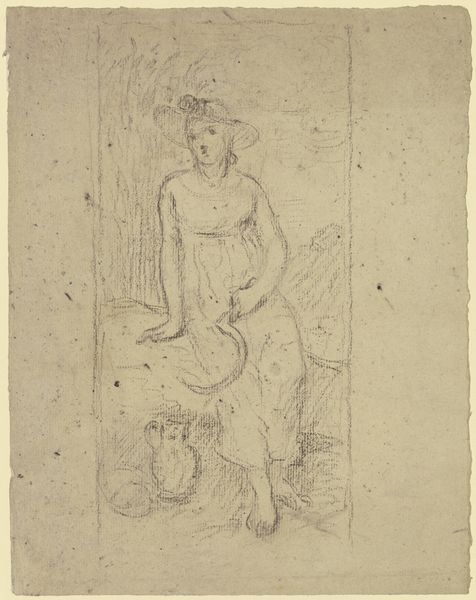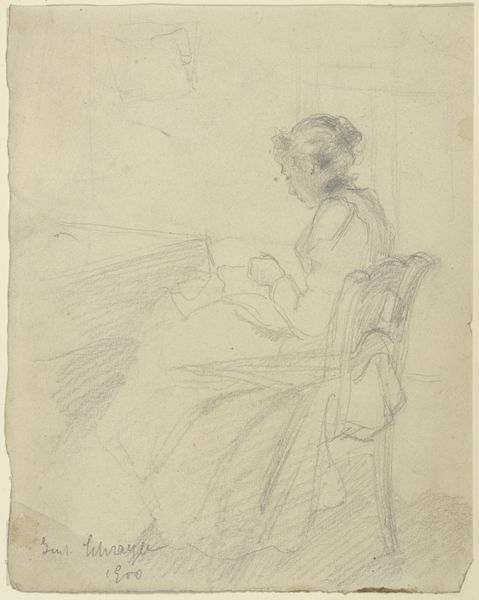
Sitzende weibliche Figur mit Blumen in den Händen, zu ihren Füßen ein Lamm 1828
0:00
0:00
drawing, paper, pencil
#
portrait
#
drawing
#
neoclacissism
#
16_19th-century
#
pencil sketch
#
paper
#
german
#
idea generation sketch
#
romanticism
#
pencil
#
history-painting
#
academic-art
#
nude
Copyright: Public Domain
Curator: This delicate pencil drawing by Johann Nepomuk Zwerger, created in 1828, is titled "Seated Female Figure with Flowers in Her Hands, a Lamb at Her Feet." It currently resides at the Städel Museum. Editor: It strikes me as ethereally fragile. The light pencil strokes create this sense of fleeting beauty, like a dream barely remembered. Curator: Indeed. We need to remember that during this time, particularly within Academic Art circles and given the influences of both Neoclassicism and emerging Romanticism, there was great consideration given to representations of women. Note the lamb – a recurring symbol for innocence, but also often utilized within religious iconography that at the time reinforced patriarchal narratives of morality. Editor: Yes, and thinking about this within a broader feminist lens, it’s interesting to see how women were represented as embodiments of purity and nature. Her nude state, while classically inspired, becomes another layer of objectification when considering the sociopolitical constraints of the period. How free was this female figure *really*, with her lamb? Curator: The public reception of Zwerger’s work would definitely have been influenced by these accepted societal conventions, further promoting certain values associated with women's roles in family, domesticity, and even national identity, reflecting the socio-cultural landscape of the time. The market demand certainly dictated subject matter in ways not readily visible to the modern viewer. Editor: It makes you consider how the artist’s intentions might be perceived differently today. It begs to question the nature of female identity—then versus now. Is it about reclaiming ownership? How might we deconstruct visual stereotypes and reconstruct a modern narrative? Curator: It's essential that we recognize those threads, allowing art history and theory to weave around such discussions, provoking thoughtful engagement. Editor: Exactly, and maybe that fragility allows us to ask some very strong questions.
Comments
No comments
Be the first to comment and join the conversation on the ultimate creative platform.
